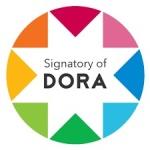The Relationship Between the Quantity of Money and Economic Growth in Algeria During the Period 1970-2019: An Econometric Study Using the Cointegration Methodology and the Error Correction Model (ECM)
Abstract
The study focused on studying the relationship between the quantity of money and economic growth in Algeria by working on two time series for the period from 1970 until 2019, by using the Engle-Granger methodology and the error correction model ECM, with the aim of testing the existence of a causal relationship between the two variables and determining their direction in the short and long runs, thus the study concluded the existence of a causal relationship in the short run from the quantity of money towards the gross domestic product. Otherwise for the long run, the causation was in both directions, i.e. a circular relationship, which expresses a special case for Algeria that differs comparing with both the traditional theory and the Keynesian approach
Downloads
References
أحمد أبو الفتوح علي الناقة. (2001).نظرية النقود والأسواق المالية. الاسكندرية: مطبعة ومكتبة الأشعاع الفنية.
ثروت جهان، أحمد صابر محمود، و كريس باباجورجيو. (سبتمبر, 2014). ما هو الإقتصاد الكينزي ؟ (صندوق النقد الدولي، المحرر) مجلة التمويل والتنمية، 51(3)، الصفحات 53-54.
صالح تومي. (2009).مبادئ التحليل الإقتصادي الكلي: مع تمارين ومسائل محلولة. الجزائر: دار أسامة للطباعة والنشر والتوزيع.
عبد السميع عناني. (2009).التحليل القياسي والإحصائي للعلاقات الاقتصادية: مدخل حديث باستخدام SPSS. الإسكندرية: الدار الجامعية
Ahmed AbulFotouh Ali camel. (2001). Money theory and financial markets. Alexandria: Al-Ishaa Art Press and Library.
Tharwat Jahan, Ahmed Saber Mahmoud, and Chris Papagiorgio. (September 2014) What is the Keynesian economy? (IMF, Editor) Finance and Development Journal, 51 (3), pp. 53-54.
Toumi Saleh. (2009). Principles of Macroeconomic Analysis: With exercises and solved problems. Algeria: Usama House for Printing, Publishing and Distribution
Tarik Kaddouri. (2010). Analysis of the relationship between the amount of money and the gross domestic product in Algeria: an empirical study for the period 1980-2008 (Master’s note). Faculty of Economic Sciences and Management Sciences, Biskra: Mohamed Khaider University.
Abdul Sami Anani. (2009). Econometric and Statistical Analysis of Economic Relationships: A Modern Introduction Using SPSS. Alexandria: University House.
Andersen, L., & Jordan, J. (1968, November). Monetary and Fiscal Actions: Atest of their relative importance in Economic stabilization. Consulté le August 10, 2020, sur ECONOMIC RESEARCH: Fereral Reserve Bank of St. Louis: https://research.stlouisfed.org/publications/review/1968/11/01/monetary-and-fiscal-actions-a-test-of-their-relative-importance-in-economic-stabilization
Marshal, I. (2016). The Link between Money Supply and Economic Growth in Nigeria: An Econometric Investigation. International Journal of Economics and Business Management, 2(3), pp. 42-51.
Rezina, S. (2016, December). The Macro-Economic Relationship among Money, Income and the Price Level in Bangladesh. British Journal of Business Design & Education, 09(02), pp. The Macro-Economic Relationship among Money, Income and the Price Level in Bangladesh.
Bourbonnais, R. (2015).Econométrie: Cours et exercices corrigés. Paris: Dunod.
Bramoullé, G., & Augey, D. (1998). Economie monétaire. Paris: DALLOZ.
El-Seoud , M. A. (2014). Testing the relationship between Money Supply and GDP in Bahrain. International Journal of Economics, Commerce and Management, II(5).
Gujarati , d. (2006). Essential of econometrics. Mc Graw Hill.
Jahan, S., & Papageorgiou, C. (2014, March). What is Monetarism? (IMF, Éd.) Finance and Development, 51(1), pp. 38-39.
Laidler, D. (1982). Friedman and Schwartz on Monetary Trends: A Review Article. Journal of International Money and Finance, pp. 293-305.
Sims, C. A. (1972, September). Money, Income, and Causality. The American Economic Review, 62(4), pp. 540-552.
Sunge , R. (2018). Money Supply Exogeneity and Endogeneity Under Zimbabwe’s Multiple Currency Regime, 2009 to 2017. Journal of Economics and Sustainable Development, 9(2), pp. 183-194.
Williams, D., Goodhart, C., & Gowland, D. (1976). Money, Income, and Causality: the U.K. Experience. American Economic Review, 66(3), pp. 417-423.
Copyright (c) 2021 saad ouledlaid, mustapha bourennane, Ahmed benmouiza

This work is licensed under a Creative Commons Attribution-NonCommercial 4.0 International License.















